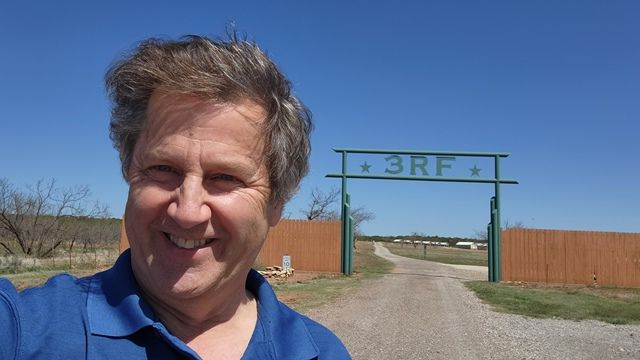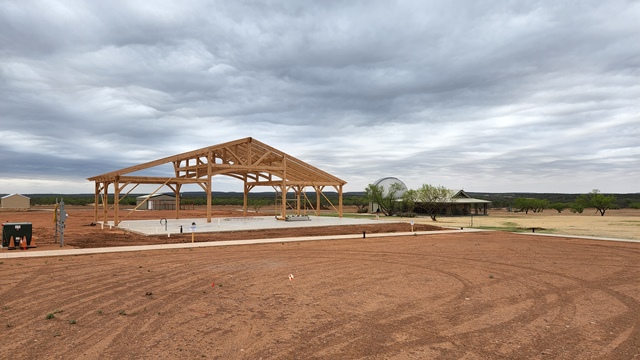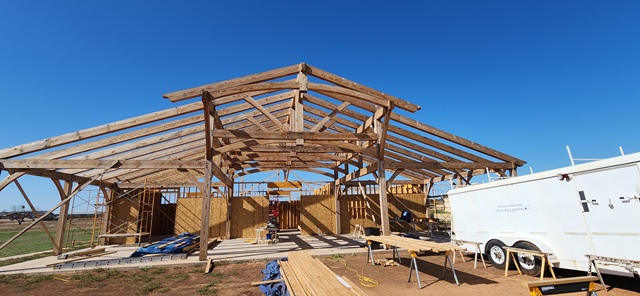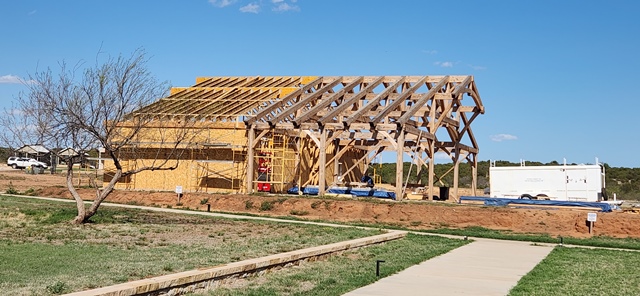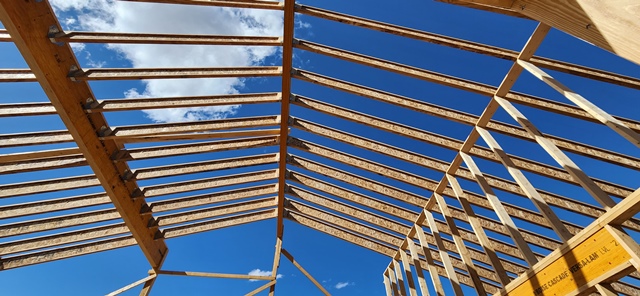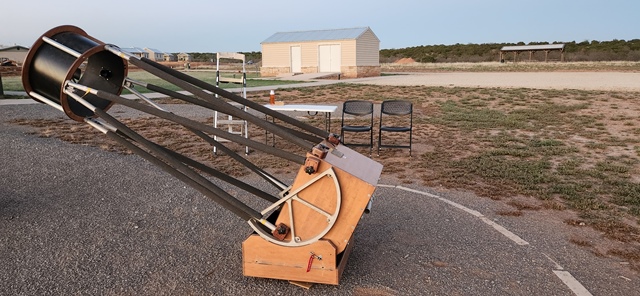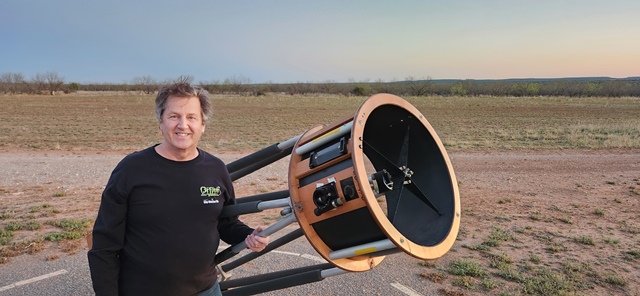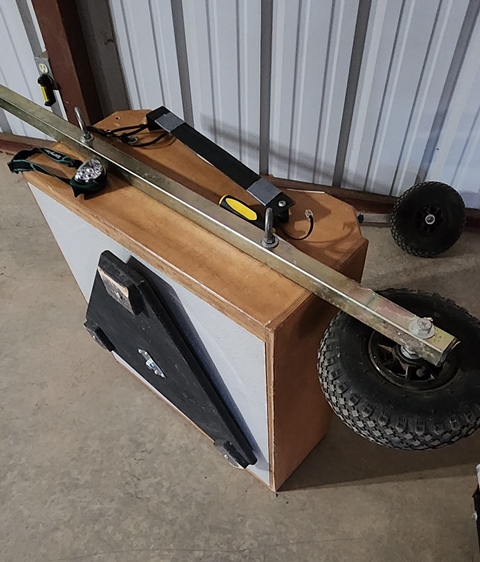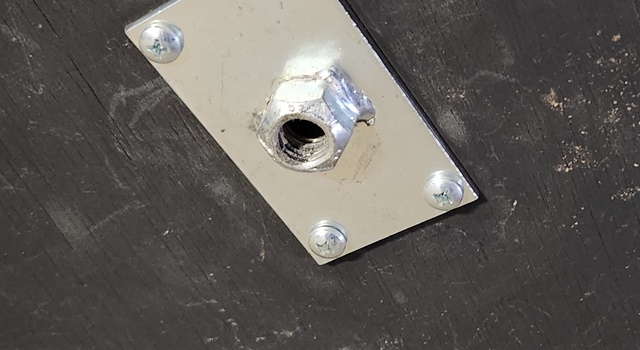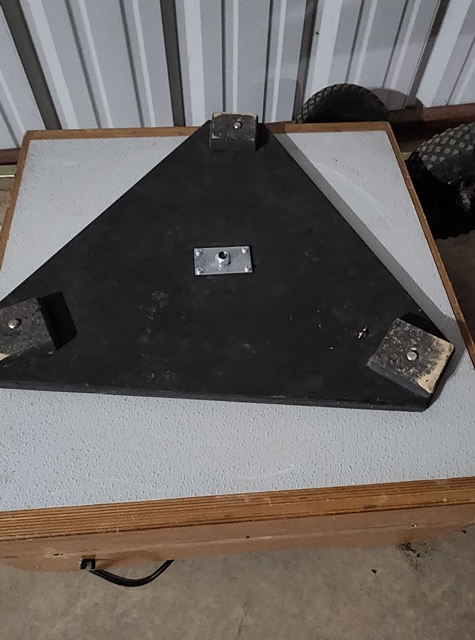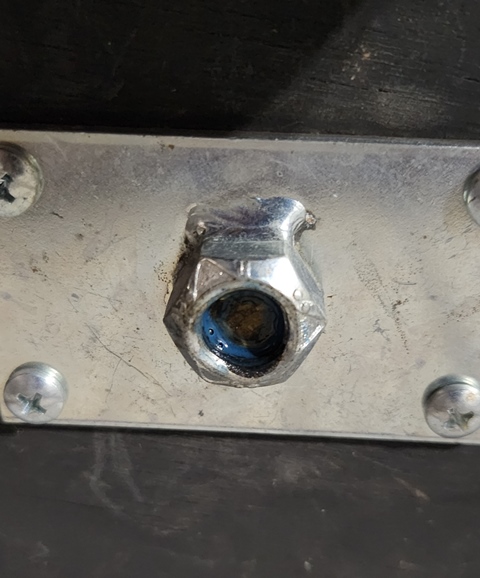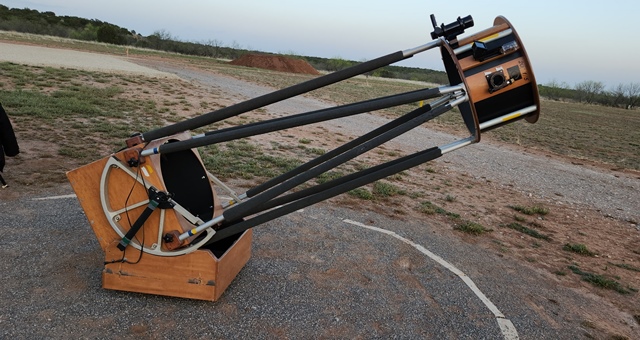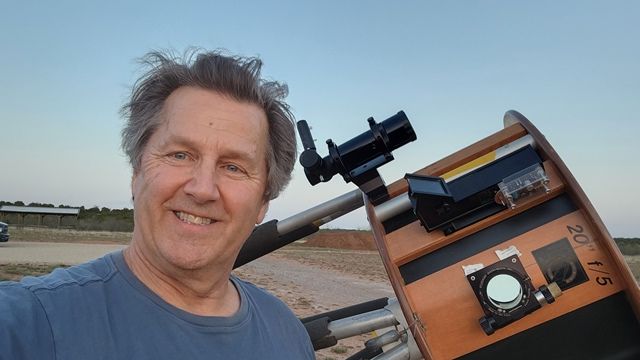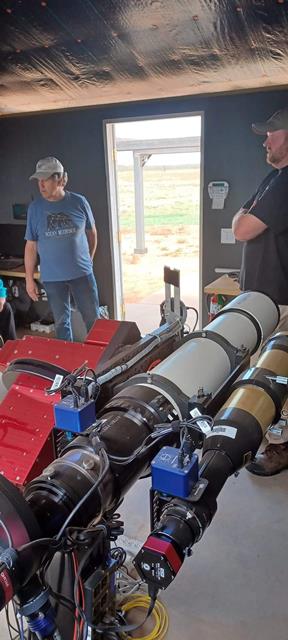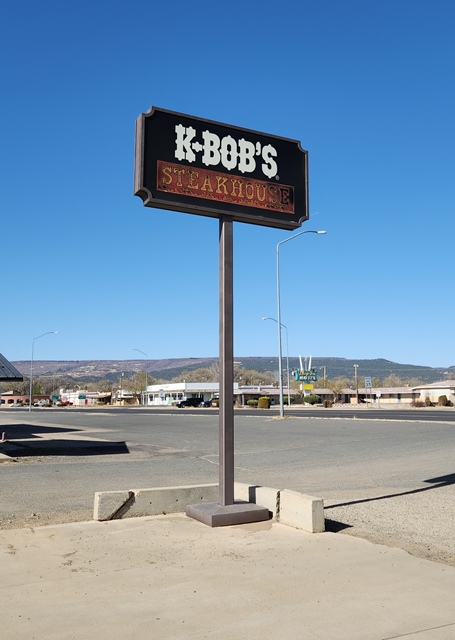I went to the Comanche Springs Astronomy Campus, sponsored by the Three Rivers Foundation (3RF) with Mike Roos from April 12, 2023 through April 16, 2023.
I went there to support their public star night event on Saturday April 15. We wanted to get some observing in also with the three nights before that event.
I always love getting this picture of the front gate of Campus. This was on Wednesday April 12 when we arrived about 3 PM.
The Pavilion is going to be the center piece for events other than education and astronomy activities. This is a picture of the progress of the Pavilion in April 2022.
This is a set of pictures to show the progress they have made in completing the Pavilion in April 2023. While we were there, the Campus work staff were installing 40 foot long I-Beam rafters.
This is a couple of pictures of the 20" telescope Mike and I were going to use Wednesday evening. The sky was clear and it was predicted to be a great night for observing.
I had checked to make sure the encoders for the Sky Commander Digital Setting Circles (DSC) were working in the afternoon and everything looked like they were. But that evening, the azimuth encoder was not working. When you moved the telescope in azimuth, the display was not changing in degrees. The way DSCs work is that the encoders measure the rotation around that axis and tell the computer this measurement. The encoders sends pulses to the computer, which the computer counts. From there, the computer can help direct you to find deep sky objects with the telescope. By not counting the readings from the encoders, the display doesn't change and the accuracy of the initial alignment of the DSCs is lost.
I first suspected the cable to be bad, so I used my new cable with the Sky Commander connected, turned in on and moved the telescope in az and altitude (alt) while watching the Sky Commander's display. The slippage still occurred in the azimuth axis.
It was obvious that we were not going to be able to use the DSCs on the 20" this night. So we used the telescope in a manual mode as best as we could.
The following day, I started to diagnose the problem with the azimuth axis slipping. With the telescope off the rocket box, I then looked at the set screw and how the azimuth encoder was attached. This is another obvious reason the encoder would slip and not report the correct signals to the computer. There is a rubber ring inside the hole in the top of the bolt that the encoder shaft fits snugly into. The set screw just makes this rubber ring snugger. I felt that this was sufficient to hold the encoder shaft still. This was not the issue.
There was no mouse or rabbit damage to the cables. This has been an issue in the distant pass where they would leave the telescopes out overnight for extended use and the varmints would chew on the cables where they rounded the corner of the mirror box into the rocket box.
So I was perplexed. It was not the obvious what the issue was.
I was spinning the rocket box base left and right and noticed the azimuth bolt that is through the rocket box base and into the ground board moved with the turning. That is not supposed to happen. That bolt is to be stationary with the ground board and the rocket box spins with the encoder attached to it to make the DSC work in the azimuth directions.
I turn the rocker box on it's side so I could see underneath it. Further inspection revealed that the ground had unspun itself from the bolt over time and only one thread of the bolt was engaged in the ground board nut. Why the base didn't fall off I am not sure. I did fix this issue a few years ago by using blue LockTite to secure that bolt. But that was all gone. I could easily spin the bolt with my fingers.
When I screwed the ground board onto the bolt, I noticed the end of the bolt was still an eighth of an inch from the end of the securing nut on the bottom of the ground board. I remember it was flush with the bottom of the bolt when I secured this bolt years before.
Then Gary Carter mentioned someone redid the ground board. That explains the symptoms we saw nicely. His new ground board was an eight of an inch thicker. I suspect the original ground board was half an inch thick and this new one was five-eighths of an inch thick. Hence why the bolt was an eighth of an inch from the end of the nut as I remembered it from before. And the blue LockTite was gone.
I added new blue LockTite to the bolt and screwed the ground board onto the bolt. There are now enough threads caught by the nut for the LockTite to hold and be effective. There is not a lot of force on this bolt, it just needs to remain fixed and not move at all when the telescope moves in azimuth.
The reason we found the first object Wednesday night was that when we slewed from the first alignment star, Polaris, to the second alignment star, Procyon, the system miraculously counted all the pulses, not missing a single one. (This is how you first align the Sky Commander at the start of a night. You tell it the positions of 2 stars and from there, it knows how to calculate the separation of objects you tell it to find for you after that.) This movement from the first to second alignment stars was in a CCW direction in azimuth. Then when we slewed to IC 4278 in azimuth, we turned the scope CW. This was trying to tighten the bolt onto the ground board and that friction worked to hold the bolt and all the pulses were counted. The next target we went to, the azimuth moved CCW and the bolt loosened from the nut and spun, thus the Sky Commander display froze on the azimuth reading for several degrees.
This explained the symptoms we saw Wednesday night very nicely.
Friday night was another night that was predicted to be a good night for observing. We used the 20" with the fixed azimuth bolt. I leveled the telescope hoping to improve pointing accuracy. The Sky Commander worked beautifully. The slippage in azimuth was not seen. With the scope being level, the objects were in the eyepiece with a zero degrees Sky Commander Altitude/Azimuth display reading or one axis was off by just 0.1 degrees while the other was spot on with a 0.0 degrees. This is ideal and what you want in a DSC pointing system.
Mike Roos and I alternated objects from each of our observing lists. We observed from 9 PM Friday night to 4 am Saturday morning. The wind started blowing hard from the north at this time which forced us to quit observing. The scope was bouncing too much to study what was in the eyepiece.
3RF has a robotic telescope in this roll-off shed. Jerry Gardner, the 3RF site coordinator is on the right. I am the left. The main imaging scope is between us.
Mike Roos and I like eating at K-Bob's Steakhouse. There used to be many in Texas that are now all closed. This one is in Raton, NM which we stopped at to eat dinner on the way home Sunday night.
